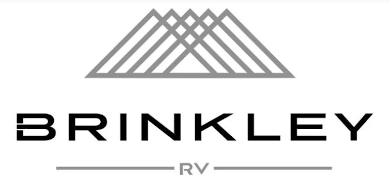Forecast 2021: A Return to Normalcy?
Experts say businesses can look forward to the economy gradually rebounding in 2021, and accelerating once a COVID-19 vaccine becomes widespread.

Relief is in sight.
Battered by the pandemic and scrambling to shore up finances, businesses can look forward to an easing of the pain over the next 12 months. Economists anticipate a gradual but noticeable recovery fueled by a surge in corporate profits, a strong housing market, and the successful rollout of a vaccine, according to experts interviewed for this article.

“The COVID-19 recession is over, and the economy is currently in an early-cycle expansion,” says Sophia Koropeckyj, managing director of Industry Economics at Moody’s Analytics, a research firm based in West Chester, Pa.
The healthier the economy, the better for business profits. And Moody’s expects the nation’s gross domestic product (GDP) to increase at a 2.1 percent clip for 2021. That’s a welcome rebound from the previous year’s decline, expected to come in at minus 4 percent when figures are finally tallied. (The GDP, the total of the nation’s goods and services, is the most commonly accepted measure of economic growth.)
The Joe Biden presidential win should support an economic rebound in three areas, according to Koropeckyj.
“Biden has proposed significantly more fiscal stimulus, which will pack a punch in the coming year as aggregate demand is still recovering from the pandemic,” she says. “Second, Biden would not resume Trump’s tariff wars with China, which have acted as a tax increase for consumers. Finally, Biden will liberalize international immigration, which will boost the supply of labor and in turn the economy’s potential.”
Faster economic growth, says Moody’s, should in turn help boost corporate profits by an expected 17.1 percent in 2021 – a dramatic turnaround from the 13.8 percent decline of the past 12 months, and reason for optimism about a return to the aggressive capital expenditures so critical to an economic rebound.
Slow & Steady Improvement
For most businesses, the return to normal should be gradual. During the first half of 2021, many households will continue to self-quarantine as a wave of bankruptcies boosts the number of permanent job losses. However, by summer, things should look different, Koropeckyj predicts.
“The economy will regain its stride in the second half of the year, when a vaccine or treatment is assumed to be widely available,” she says.
Business owners seem to share Moody’s optimistic mindset.

“Even though there’s still a lot of uncertainty out there, many companies have a positive outlook,” says Tom Palisin, executive director of The Manufacturers’ Association, a York, Pa.-based regional employers’ group with more than 370 member companies. “Maybe they’re being overly confident, but our members seem to feel that in six months’ time things will have turned around significantly.”
With its diverse membership in food machinery building, fabrication, processing and defense, the Pennsylvania trade group can be viewed as a proxy for American industry. The organization’s members are reporting results that seem to position the tail end of 2020 as something of a springboard for future months.
“Conditions for our members have improved, with increasing revenues, since the April and May timeframe,” according to Palisin.
Springboard or not, it’s likely that many businesses outside of the RV industry will not regret seeing 2020 in their rearview mirrors, with many businesses resorting to furloughs and layoffs to maintain operations while dealing with supply chain problems.
Palisin acknowledges that for many operations, the road ahead will be rocky – especially for those companies with limited resources.
Housing Surges Continue
An important driver for the economy at large, residential construction is doing extremely well, and promises more good news in 2021, experts say.
“Housing demand has bounced back thanks to very low mortgage rates and the release of pent-up demand,” says Koropeckyj, who points to healthy builder confidence as the nation enters the new year.
The road ahead looks sunny indeed: “We forecast housing starts will surge by 20.1 percent in 2021, after falling an expected 5.7 percent in 2020 due to the initial impact lockdown orders had on construction,” she says. The comparable 2019 figure was a positive 3.8 percent.
Median prices for existing homes also are increasing at a healthy rate, expected to top 7.6 percent when 2020 figures are finally tallied, which would surpass the 5 percent increase of the previous year. One key reason: Tight supply.
“Housing has been a seller’s market with low inventory levels as homeowners have been reluctant to offer their residences up for sale for fear of contracting the coronavirus,” says Koropeckyj.
Despite its recent success, the housing industry faces its own headwinds.
“We expect prices to fall by 0.3 percent in 2021 as foreclosures mount due to an unwinding of forbearance measures by the federal government and private lenders,” Koropeckyj says. “According to the latest Senior Loan Officer Opinion Survey, banks have tightened standards across all sorts of mortgage products.”
Solid Prospects for Retailers
Retailing tends to reflect and invigorate the nation’s economy – and this is a sector that has registered notable gains that promise to continue.

“Our current 2021 forecast is for 6.2 percent growth in core retail sales,” says Scott Hoyt, senior director of consumer economics for Moody’s Analytics.
That forecast represents a substantial improvement over 2020, when the 2.6 percent increase expected when numbers are finalized represented a deceleration from the 3.9 percent growth clocked in 2019. (Core retail sales exclude the volatile auto and gasoline segments.)
The positive growth rate for retailers in 2020 has come about as consumers have rechanneled their purchasing away from services and toward merchandise.
“While consumer spending has been hammered pretty badly, retailers have not been hit nearly as hard as service businesses,” says Hoyt. Moody’s forecasts a decline of 5.2 percent in services spending when 2020 numbers are in – a stark reversal from the 4.3 percent gain in 2019. “Because of people’s hesitancy to travel, to go to entertainment facilities, and to do things with other people, to a certain degree they’re replacing such activities with buying goods,” Hoyt says.
Capital Investment Slows
Despite the strength of housing and retailing, the economy will face headwinds in 2021. Not least among them is the sluggish state of capital investment, experts say.
Corporate decision-makers, faced with uncertainty, are reacting in a predictable way: Keeping their powder dry. By the end of 2020, total real fixed investment had fallen by 27 percent annualized, according to Moody’s Analytics.

“In uncertain times, investors hold onto cash and delay investments,” says John Manzella, a consultant on global business and economic trends who is based Amherst, N.Y. “This undoubtedly puts downward pressure on economic growth.
As a result, uncertainty has become the enemy of prosperity.”
More robust investments in commercial buildings and machinery are not expected to arrive any time soon, according to Koropeckyj.
“Low-capacity utilization and still-high uncertainty will make expansion decisions difficult, though the declining cost of corporate borrowing will provide some offset,” she adds. “Major segments of investment will be weak, with transportation equipment and structures especially hard-hit.”
Structures investment is expected to decline by more than 20 percent in the months ahead, led by the collapse in retail and reduced demand for office space.
Bank loan availability poses one barrier to a rapid return of capital investment.
“While interest rates are low, many companies have taken financial hits that can affect their ability to qualify for loans,” says Palisin. “With corporate financials changed so drastically from the prior year, there is some tightening of access by lending institutions.”
Moody’s identifies technology as one bright spot in an otherwise shadowed capital investment picture. Palisin concurs with the observation, reporting an increase in spending by his members to boost efficiencies.
“The pandemic will probably accelerate the trend toward more automation and robotics,” he says. “Such technology will be needed to increase manufacturers’ resiliency.”
Consumer Confidence in Flux
Spending by consumers accounts for some 70 percent of economic activity and is arguably even more important than capital investment for the nation’s overall business health. Household spending, though, is driven by public psychology – and the most recent reports from Moody’s Analytics show that the nation has a lot of catching up to do. By late 2020, consumer confidence was running as low as it was in March and April – during the worst days of the pandemic.
If uncertainty about the course of the pandemic and the availability of a reliable vaccine are reason enough for high anxiety, there’s a more immediate driver of consumer discontent: The noticeable drop in take-home pay over the past year.
“Wage and salary income, including the value of benefits, is forecast to decline 1.3 percent when 2020 numbers are finalized,” says Hoyt. Those numbers represent a reversal in fortune from the 4.4 percent increase of 2019. (Wage and salary income figures exclude government payments such as the 2020 pandemic relief checks.)
Pandemic-related furloughs and business closings accounted for a major portion of wage declines. Moody’s expects the unemployment figure to come in around 8.5 percent when 2020 numbers are finally tallied. That’s a sharp increase from the robust 3.5 percent level consumers were enjoying as recently as last February.
Consumers might improve their outlook if the unemployment picture were brightening. Yet the expectations here are for only gradual improvement. The unemployment rate is expected to decline to 7.8 percent by the end of 2021.
“The labor market will not recover all COVID-19-related job losses until the second half of 2023,” says Koropeckyj.
A brightening jobs picture should translate directly into a boost in take-home pay. Moody’s anticipates 2021 wage increases to come to 2.5 percent – a level high enough to allow shoppers to exhale, but too low to spark rapid spending.
Hoyt’s expectations for improvements in the public psychology are suitably conditional: “We are assuming a slight upward trend in consumer confidence until we get
a vaccine or an effective treatment, at which point it will probably move up faster.”
Tightening Labor Market Ahead
Conditions in the labor market also are preventing a faster recovery, experts say. Not only is the unemployment level high, but experts say employers are not finding the job applicants they need.
“Companies are having problems recruiting and getting folks to apply for work,” says Palisin, with The Manufacturers’ Association.
“Some things going on in the labor market are probably contributing to that. First, the portion of the workforce still on furlough will probably not take another job but will return to the one they were furloughed from. Second, there are child-care issues as students go back to school online and it’s difficult for those people to get back into the labor pool. Finally, there is some level of health concern by employees going back into the work- place, especially if they are older workers or higher risk people.”
While the future of the labor market remains unsettled, experts say the opening months of 2021 might provide clues as to whether hiring difficulties will continue.
“Perhaps as we get into the new year people will start to feel more comfortable returning to the workforce, the childcare issues may be resolved, and a vaccine will be developed,” Palisin says. “But right now there seems to be a lot of hesitancy in the labor pool. People are sitting on the sidelines to see what is going to happen.”
Competition for quality workers makes the hiring process all the more difficult. And when the labor market gets tight, upward wage pressure can’t be far behind.
“To remain competitive, companies are restructuring their compensation packages to retain higher-end skilled workers,” Palisin says. “Retirements by the Baby Boomers and a decline in immigration are also putting higher pressure on wages.”
Companies aren’t likely to take a wait-and-see approach while the best people go elsewhere, he says, adding, “Even during this period, talent is one of the top – if not the top – factors to keep a company growing.”
New Year, New Prospects
In the opening months of 2021, experts say some key indicators should offer clues to how the year will turn out. Palisin feels the level of durable goods orders may signal the economy’s trajectory, as will the level of capital expenditures.
“Businesses will be looking for increased certainty on matters such as market stabilization, the ability to hire, access to a qualified labor pools, and workplace safety protocols,” he says. “It would be good to have some kind of resolution around trade issues as well. All of those concerns will be front-burner ones.”
As for the view at Moody’s Analytics, Koropeckyj looks to consumer sentiment levels in early 2021 for insight into how freely shoppers will spend the rest of the year.
“We will also look closely at the number of business bankruptcies,” she says. “And the core unemployment rate, which excludes temporary layoffs, will gauge how much joblessness is attributable to permanent layoffs, which leave behind long-lasting scars on the labor market.”
However, perhaps the best economic indicator of all will be the rate of progress toward a cure for the not-so-hidden elephant in the room: The pandemic.
“Businesses will be concerned about the timeline of a vaccine,” says Koropeckyj. “The path toward some semblance of economic normality hinges upon its development and widespread distribution.”



